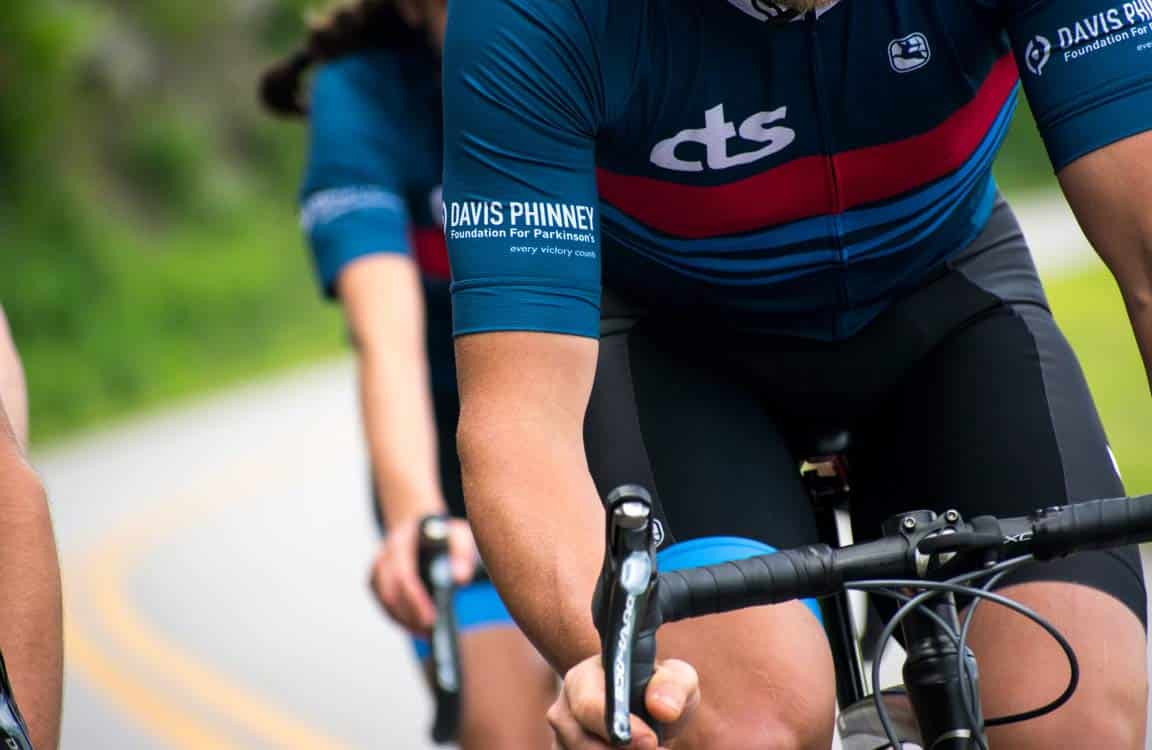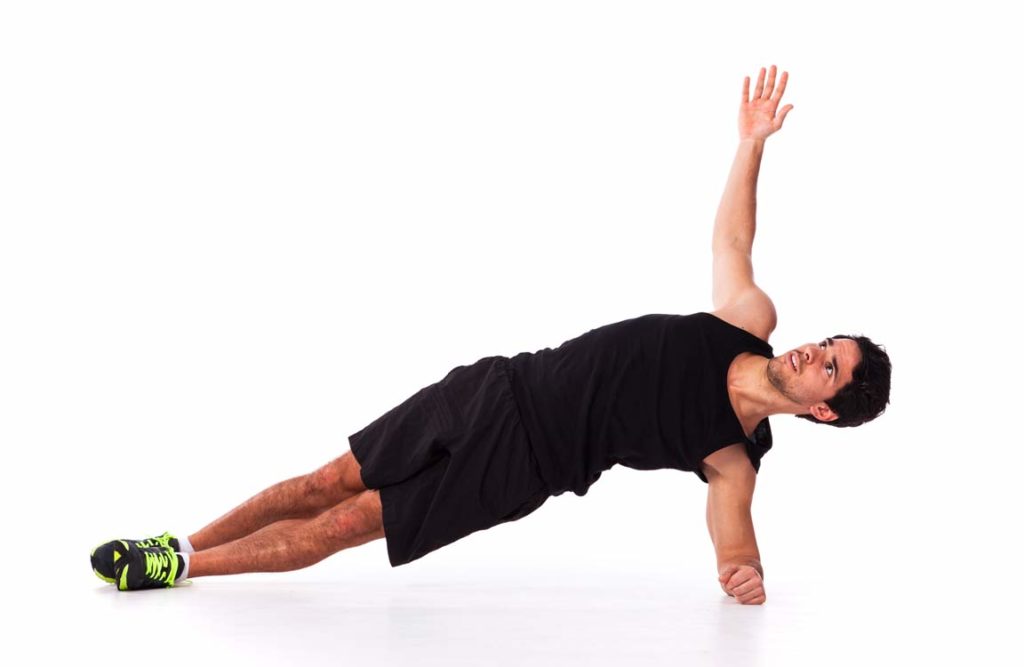
Cycling + Strength: Chris Carmichael’s 90-Minute Full Body Workout
By Chris Carmichael
CEO/Head Coach of CTS
I got a call from an athlete this week, as he was walking from one meeting to the next, exclaiming with glee that he had 90 whole minutes to work out that afternoon! That might be a normal Tuesday for you, but we’ve been shoehorning 45-minute training sessions into his schedule for weeks, so 90 minutes was a windfall. “What’s the best thing I can do in 90 minutes?” he asked.
Here’s the workout I gave him, and the reasons it’s a good workout for you, too.
15 Minutes Strength Training
10 Minute Cycling Warm Up
4×10 minute SteadyState Intervals, with 5 minutes easy spinning recovery between intervals
10 Minute Cool Down
Specific exercises for the strength training component of the workout are described below. Before getting to those, let me explain why this is the workout to choose.
Cycling + Strength Training
I’ve covered this in several blogs, so I’ll be brief about it here. You’re going to be a better athlete – overall – by incorporating strength training into your schedule year round. My coaches and I have noted that cyclists who exercise off the bike miss fewer days of sport-specific training throughout the year. It may sound counterintuitive, but spending a bit more time training off the bike results in more annual miles and hours on the bike. This effect is even more pronounced in athletes over 50 years of age (like me).
Strength before cardio
Generally speaking, I advise athletes to do the highest priority and highest intensity exercises early in a workout. In other words, if you’re going to do a set of PowerIntervals during a 3-hour endurance ride, do them in the first hour when you are fresher. If you have a block of interval workouts in a week, you would generally schedule the highest intensity intervals earlier in the block. Following this logic, you might expect me to recommend this 15-minute strength training session after the cycling session, but I don’t do that in this case.
In practice, athletes skip core and strength work at the end of rides. The rate of compliance is terrible. When you get in from a winter ride you’re cold, hungry, and wrapped in layers of clothing. When you’re done with an indoor cycling session, you’re hot and soaked with sweat. Either way, you’re DONE. Maybe you’ll take a few minutes for a hip flexor or piriformis stretch, but that’s about it.
Before you get on the bike, you’re motivated for your training session. The strength training recommended here is primarily core strength and upper body. It doesn’t burn through a lot of energy and won’t diminish your cycling performance. When I move this type of strength training to the beginning of a cycling workout, compliance and consistency go way up.
Long and Sustained Intervals
When a Time-Crunched Athlete can exercise longer, it’s an opportunity to accumulate more time-at-intensity with long and sustained intervals. In this example I have used SteadyState, which are 10-20 minute intervals at or just below lactate threshold. During the intervals, ride at a steady pace that is 90-95% of your CTS Field Test power output or 92-94% of your CTS Field Test heart rate. This will be about an 7-8 on a 1-10 scale of perceived exertion, where 10 is an all-out effort. Maintain a cadence of 90-95 rpm. Tempo intervals would also be a great option for this workout. Tempo intervals are longer than SteadyState (15-60 minutes) at a challenging aerobic pace. The intensity is below lactate threshold but harder than your cruising endurance pace (80-85% of CTS Field Test Power, 88-90% of CTS Field Test Heart Rate, or RPE 6/10).
► Free Cycling Training Assessment Quiz
Take our free 2-minute quiz to discover how effective your training is and get recommendations for how you can improve.
Time-at-intensity is a key consideration for any energy you’re targeting. In this example you would accumulate 40 minutes at SteadyState intensity, which you obviously can’t do in a 45-minute start-to-finish workout. In contrast, whether your total workout time is 45 minutes or two hours, you might only be able to accumulate 20 minutes of quality VO2 max intervals.
Recommended Strength Exercises
In some ways you can think of a 15-minute strength training session before a cycling workout as a component of your overall warm up. You’re getting your body moving, increasing heart rate, and clearing your mind of whatever you were doing beforehand. I like to keep it simple and focus primarily on core and upper body strength. There are hundreds of exercise variations you could use. Even if you don’t use the exact movements described below, I recommend using your favorites that are similar in type.
Push ups (and variations)
Pushups are simple but effective, and there are many ways to adjust the difficulty and focus. If you’re starting out, do them from your knees instead of your toes. Wider hands increase the focus on your chest, particularly the outer portions. Narrowing your hands (directly under your shoulders, elbows close to your torso) increases muscle activation in both chest and triceps. To increase focus on your shoulders, try a “Dive Bomber Pushup” by raising your hips so your body is an inverted V. And if you need even more challenge, raise your feet onto a chair. Depending on your conditioning, complete 10-20 pushups per set.
Bear Crawl
A Bear Crawl (demo video) is a great warmup exercise that helps strengthen your chest, shoulders and core and gets your hips moving. Start by crouching down on hands and feet (not hands and knees) with your hands in front of you shoulder-width apart and your feet behind you. Your hips should be up to keep your knees off the floor. Crawl forward starting with your right hand and your left foot, then your left hand and the right foot. Bear crawl for 30 seconds or 30 steps.
Side Plank with Rotational Reach

To begin, get into a side plank with your body in a straight line and your elbow and forearm on the ground (low plank) and your feet stacked. Lift your hips off the ground, making sure your elbow is directly beneath your shoulder. Reach your top hand up toward the ceiling. From here, bring your top hand down, rotate your chest and reach under your armpit as if you’re reaching for something behind you. Rotate back to the start position, reaching your hand up toward the ceiling. Yo
As you rotate, be mindful of stabilizing your shoulder, and engaging your core and glutes. Control is way more important than speed or how far you can reach your hand underneath you. Complete 10 reps to each side. You can find images of this plank variation and many more here.
Reverse Snow Angel
The muscles of the upper back are important for cyclists because they help with maintaining a comfortable posture on the bike. They are somewhat difficult to exercise without equipment, but the Reverse Snow Angel is a good exercise. I like it because it’s a prone exercise that doesn’t encourage athletes to hyperextend the spine. There’s a good demonstration of this exercise here.
Lay facedown on the ground with your forehead resting on the ground and your arms by your sides. Pinch your scapulae together using your lats and rhomboids to lift your hands a few inches off the ground. With your palms facing down and your elbows straight, bring your hands forward until they come together over your head (like Superman). Reverse the motion to return to the starting position. Repeat 10 times per set.
► FREE Mini-Course: Learn How to Maximize Your Limited Training Time
Learn step-by-step how to overcome limited training time and get faster. Walk away with a personalized plan to increase your performance.

Comments 9
Chris,
I was wondering if you have any article’s concerning how one can get back onto their saddle after having dual inguinal hernia surgery?
By the way, I’m the one that had surgery a week ago.
I was on top of the cycling world before my surgery and wondering what to do next, since being kicked down from atop!
We’re already into the month of March in Michigan and it’s literally killing me cycling season is upon us.
My surgeon stated at week three I could slowly begin to cycle.
I want my hernias to heal correctly for sure before I go full tilt on my road bike.
Can you recommend any particular exercises I can engage in to strengthen my body that inturn won’t stress my hernia areas?
Any info at this point would be greatly appreciated!
Thanks,
Frado
I am a national level Uk 70 year old racing cyclist. Very good article thank you – but I think if one is still competing it is more beneficial to save the intense stuff to the end – replicating likely race scenarios. Agree with the strength session first however for all the reasons you state.
Great timely article! Just recovering from bilateral Knee replacement and need to start strength training. Yes the complaince issue is important, if you done the bike work out right you don’t feel up to strength training and you can get hurt with heavier weights. Stretching before bed can be useful as well.
>>>Earn 305 euro\day, it’s here>http://money24h.icu/#HSQ4CO
I tend not put core exercises, yoga/stretching, back to back with cycling. But if you do I would agree that strength exercises are better first. I reduce core exercises in the prime cycling season and let the increased time of the bike work my body as I become road tough. Thanks for the article Chris.
You are right when you says it is easy to scrimp on strength training. And trying alternate days, cycling/strength, leaves less cycling days and you tend to overdo it in strength days and seemingly not fully recover from the prior cycling day, particularly if are 75 y.o. as I am. Your recommendation seems just right and I am anxious to incorporate it into my training schedule. Thanks!
Robbie: This has been my experience in coaching athletes…first thing to go or gets reduced is the strength training. Get is done first before getting on the bike so it is out of the way and then your cycling workout get 100% of your focus.
Have fun, Chris
Chris, thanks for addressing year round strength work for cyclists. Far too often, riders want to put more time on the bike, when some implemented year round strength training will be very beneficial.
I’d suggest even more focus on spine strengthening for cyclists. As a body worker and massage therapist I’m seeing more people with a hyper-kyphotic spine from vocations and activities that are flexion focused. Along with this is an increase in medially rotated shoulders due to many jobs requiring hours long computer time. On the bike, this medially rotated shoulder is further exacerbated. Locust, cobra and superman movements help to offset this imbalance.
I enjoy you and your staff’s articles. They are always a refreshing and informative read!
Matt: Good suggestions! Thanks for the words of encouragement.
Chris